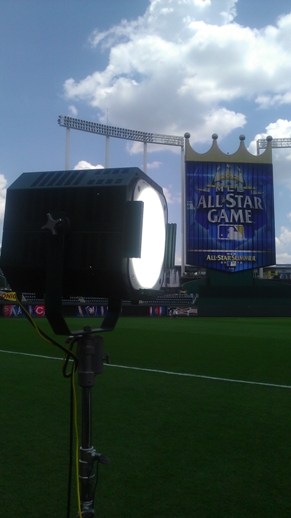The use of lighting to enhance stage productions was first recorded as far back as the early Grecian and Roman times. Even all those centuries before the invention of electricity, budding producers built their theaters facing east to west so that in the afternoons the sunlight would shine on the actors, without getting in the eyes of the orchestra. Many centuries later, Shakespearean theaters were built with a circular opening in the roof to allow the natural light to flood in and illuminate the action on stage.
In 1880, Thomas Edison received the historic patent embodying the principles of his incandescent lamp that paved the way for the use of electric lighting in theatre. The Savoy Theatre in London was the first in the world to install new electric lights for their stage productions, swiftly followed by the Bijou Theatre in Boston as well as the Vienna State Opera. The introduction of footlights, border lights, and strip lights completely transformed the way in which the audience could view the action taking place on stage.
Spring forward to mid-20th-century theatre and the evolution of moving pictures, and suddenly we start to see stage lighting take on a whole new meaning and become an art form. American theatrical producer and play write, David Belasco, worked tirelessly with his electrician, Louis Hartman, to develop a range of single source lighting equipment that was used to light the acting areas from above the stage as well as from the auditorium.
With the introduction of the moving picture, studios began to spring up all over the world, and advances in lighting took a new turn as mobile lighting devices were used to light the action on screen. Soft focus lenses, basic effects and a deeper understanding of how images are seen by a movie theatre audience paved the way for investment in the lighting industry as a whole.
From the 1960’s onwards, new and more exciting lighting effects were becoming the mainstay of theatrical performances the world over. With strobe lighting, parcans and automated variable color changing lights gradually becoming increasingly common up until the 1990’s, stage lighting had become an art form in its own right.
In recent years, the 21st century has seen a tremendous amount of technological advancements in the way stage lighting is used to enhance audience enjoyment. Whilst the basic concepts still exist, LED technology and digital consoles allow much sharper, quicker and even more exciting illumination to take place at the touch of a button.
The Future of Stage Lighting
Without a doubt, the most innovative development in stage lighting over the last few years has been the introduction of LED light sources. Being energy efficient, cost-effective and producing very little heat, LED is the future of stage lighting across venues of all shapes and sizes. LED also offers endless color options that create atmosphere at every event from small intimate productions through to large scale rock concerts and beyond.
Lighting Solutions from Frank Gatto & Associates
As a team of lighting professionals with a thorough understanding of how lighting can complement every occasion, Frank and his team can supply you with every type of lighting solution for any event.
Frank Gatto & Associates, Inc. are specialists in lighting for television events of all kinds. If you have an event that needs expert lighting, please call us today to see how we can help.
Phone: 561-368-0101
Email: frank@frankgattolighting.com
We can be found on Social Media at the following links.

